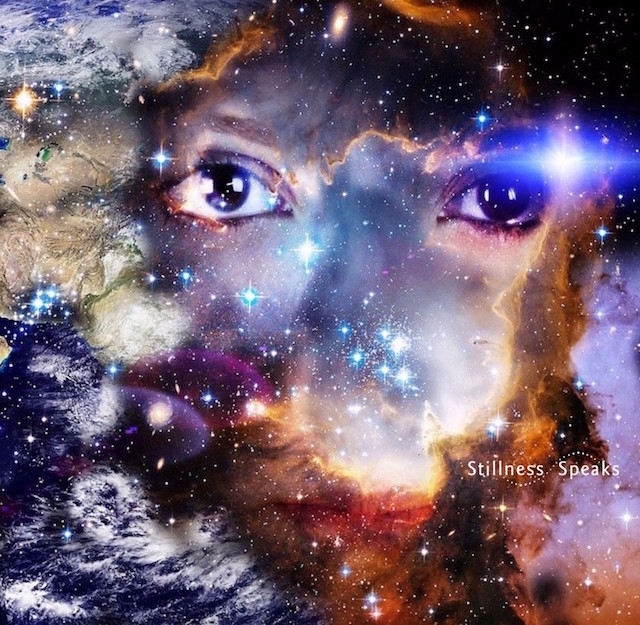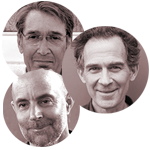“The inside information is that yourself as “just little me” who “came into this world” and lives temporarily in a bag of skin is a hoax and a fake.” ~ Alan Watts

How to be a Genuine Fake is the third chapter from Alan Watt’s book The Taboo Against Knowing Who You Are. This overview focuses on systems of thought that have shaped our self concept, specifically how we see ourselves as individual entities separate from the universe.
This is part 2 of a multi-part series on Alan’s book. Here’s Part 1: Inside Information.
All text from the book is italicized. Download a free PDF of this book and be sure to read more about Alan Watts on his StillnessSpeaks teacher’s page.
Who is the Real You? What is Self? What am? We believe we live temporarily inside our “bag of skin.” Using his extensive understanding of philosophy, religion and science, Watts overturns the ways we think about ourselves and our place in universe. This chapter, How to be a Genuine Fake, focuses on systems of thought that have shaped our self concept.
“We must first look at the form and behavior of the hoax itself. I have long been interested in trying to find out how people experience, or sense, their own existence—for what specific sensations do they use the word “I”?”
“Few people seem to use the word for their whole physical organism. “I have a body” is more common than “I am a body.” We speak of “my” legs as we speak of “my” clothes, and “I” seems to remain intact even if the legs are amputated. We say, “I speak, I walk, I think, and (even) I breathe.” But we do not say, “I shape my bones, I grow my nails, and I circulate my blood” …much of what goes on in the body seems to happen to “I” in the same way as external events.”
“This whole illusion has its history in ways of thinking—in the images, models, myths, and language systems which we have used for thousands of years to make sense of the world.”
“It is….as if the human race had hypnotized or talked itself into the hoax of egocentricity. There is no one to blame but ourselves … If there is any biological foundation for the hoax it lies only in the brain’s capacity for narrowed, attentive consciousness hand-in-hand with its power of recognition—of knowing about knowing and thinking about thinking with the use of images and languages.”
Watts walks us through several “models of the universe” or ways in which we think about ourselves and the universe… These models are myths we create to make sense out of that which we cannot control and do not understand.
The first is the Net Model in which our “universe, including ourselves, is thoroughly wiggly. Its features are wiggly in both shape and conduct. Clouds, mountains, plants, rivers, animals, coastlines—all wiggle.”
As humans we love to divide, subdivide, order, count and organize these wiggling items into patterns.
“The net has “cut” the big wiggle into little wiggles, all contained in squares of the same size. Order has been imposed on chaos. We can now say that the wiggle goes so many squares to the left, so many to the right, so many up, or so many down, and at last we have its number. Centuries later, the same image of the net was imposed upon the world as the lines of both celestial and terrestrial latitude and longitude, as graph paper for plotting mathematical wiggles, as pigeonholes for filing, and as the ground plan for cities. The net has thus become one of the presiding images of human thought.”
But the Net Model is not the ultimate….
“However much we divide, count, sort, or classify this wiggling into particular things and events, this is no more than a way of thinking about the world: it is never actually divided.”
Watts moves onto the “Ceramic Model of the universe, in which we think of it as so many forms of one or more substances, as pots are forms of clay, and as God is said to have created Adam from the dust.”
This model has a benevolent creator God who knows us intimately and watches over each iota of his creation. But as Watts points out, this model has limitations…
“This has been an especially troublesome image, bewildering philosophers and scientists for centuries with such idiotic questions as: “How does form (or energy) influence matter?” “What is matter?” “What happens to form (the soul) when it leaves matter (the body)?” “How is it that ‘mere’ matter has come to be arranged in orderly forms?” “What is the relationship between mind and body?”
“…no one ever discovered a piece of formless matter, or an immaterial form, it should have been obvious that there was something wrong with the Ceramic Model. The world is no more formed out of matter than trees are “made” of wood. The world is neither form nor matter, for these are two clumsy terms for the same process, known vaguely as “the world” or “existence.” Yet the illusion that every form consists of, or is made of, some kind of basic “stuff” is deeply embedded in our common sense.”
Watts also call the Ceramic Model the Crackpot Model…
“But the Crackpot Model of the world as formed of clay has troubled more than the philosophers and the scientists. It lies at the root of the two major myths which have dominated Western civilization, and these, one following upon the other, have played an essential part in forming the illusion of the real person.”
“If the world is basically “mere stuff” like clay, it is hard to imagine that such inert dough can move and form itself. Energy, form, and intelligence must therefore come into the world from outside. The lump must be leavened. The world is….like an artifact, someone must have made it … The forming and moving of matter is thus attributed to intelligent Spirit, to a conscious force of energy informing matter so that its various shapes come and go, live and die.”
Central to this model is benevolent personal God who resides outside this molded lump of clay that he’s animated into life. This god is completely separate form the world and although he is loving and caring, as a father toward his children, he has rules we must follow if we want to be rewarded with eternal bliss and love, rather than unending torment.
“The problem of this image of God was that it became too much of a good thing. Children working at their desks in school are almost always put off when even a kindly and respected teacher watches over their shoulders. How much more disconcerting to realize that each single deed, thought, and feeling is watched by the Teacher of teachers, that nowhere on earth or in heaven is there any hiding-place from that Eye which sees all and judges all.”
As modernity emerged that Crackpot Model was retained but without the potter. What we are left with is a Fully Automatic Model…
“The world was still understood as an artifact, but on the model of an automatic machine. The laws of nature were still there, but no lawmaker. According to the deists, the Lord had made this machine and set it going, but then went to sleep or off on a vacation. But according to the atheists, naturalists, and agnostics, the world was fully automatic. It had constructed itself, though not on purpose.”
… which leads to alienation….
“If the all-too-intelligent God was disconcerting, relief in getting rid of him was short-lived. He was replaced by the Cosmic Idiot, and people began to feel more estranged from the universe than ever. This situation merely reinforced the illusion of the loneliness and separateness of the ego (now a “mental mechanism”) and people calling themselves naturalists began the biggest war on nature ever waged.”
Mixed up with the Cosmic Idiot, and perhaps transcending it is Nominalism which can be found as early as the late Middle Ages. Nominalism according to Watts, became the dominant attitude of Western thought and especially of the philosophy of science. Early nominalists believed…
“Mankind was no more than the sum total of individual people. Mankind was not a substance but simply a name for a class of creatures; it was not real but merely nominal.”
“… a consistent nominalist will have to be forced into the position that there really is no such thing as the human body: there are only the particular molecules of which it is composed, or only the particular atoms—not to mention electrons, protons, neutrons, and so forth.”
What’s beyond Nominalistic thinking which reduces everything to bits and bites…. a wholistic perspective, a scientific astrology.
“It is not enough…to describe, define, and try to understand things or events by analysis alone, by taking them to pieces to find out “how they are made.” This tells us much, but … less than half the story. Today, scientists are more and more aware that what things are, and what they are doing, depends on where and when they are doing it.”
A scientific astrology is a wholistic view of a person integrated fully into the network of his/her surrounding universe.
“For when the astrologer draws a picture of a person’s, character or soul, he draws a horoscope—that is, a very rough and incomplete picture of the whole universe as it stood at the moment of that person’s birth. But this is… a vivid way of saying…your essential Self, is the whole cosmos as it is centered around the particular time, place, and activity called John Doe. Thus the soul is …the entire network of relationships and processes which make up your environment, and apart from which you are nothing. A scientific astrology, if it could ever be worked out, would have to be a thorough description of the individual’s total environment—social, biological, botanical, meteorological, and astronomical—throughout every moment of his life.”
Watt’s returns to his original thesis. The hoax that we are entities separate from the universe is also a double bind nearly impossible to overturn…
“The child is tricked into the ego-feeling by the attitudes, words, and actions of the society which surrounds him—his parents, relatives, teachers, and, above all, his similarly hoodwinked peers. Other people teach us who we are. Their attitudes to us are the mirror in which we learn to see ourselves, but the mirror is distorted.”
“Yet the very society from which the individual is inseparable is using its whole irresistible force to persuade the individual that he is indeed separate! Society as we now know it is therefore playing a game with self-contradictory rules… This state of affairs is known technically as the “double-bind.” A person is put in a double-bind by a command or request which contains a concealed contradiction.
Watts offers a solution to this conundrum…
“…the fullest collaboration with the world as a harmonious system of contained conflicts—based on the realization that the only real “I” is the whole endless process. This realization is already in us in the sense that our bodies know it, our bones and nerves and sense-organs. We do not know it only in the sense that the thin ray of conscious attention has been taught to ignore it, and taught so thoroughly that we are very genuine fakes indeed.”
==== *** ====
Again, here’s Part 1: Inside Information.
And, stay tuned … more from Alan Watts is coming in the future … in the next installment of this series about the Taboo of Knowing Who You Really Are.












Que maravilhosa fala sobre a Consciência.